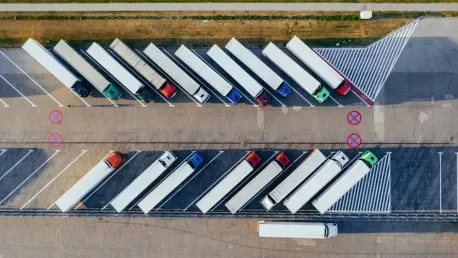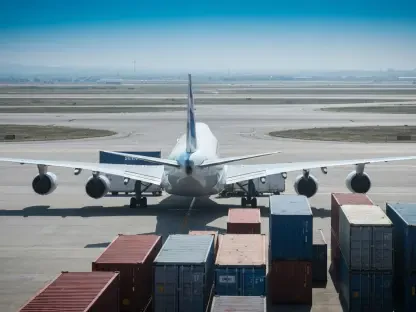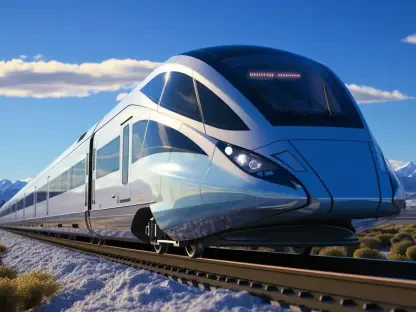The transportation industry is undeniably undergoing a rapid transformation driven by advancements in technology and evolving operational risks. This dynamic landscape presents a unique blend of challenges and opportunities for the transportation insurance sector. As technologies like autonomous vehicles and blockchain become more prevalent, the insurance industry must adapt its strategies and offerings to remain relevant and effective in mitigating risks.
Shifting Landscapes in Transportation Insurance
The transportation insurance market is currently navigating through a labyrinth of complexities, characterized by evolving risks and financial instability. Insurers face significant challenges in adapting to these changes, especially with the advent of new technologies like autonomous vehicles, which introduce unprecedented risk patterns. The transportation insurance sector is at a tipping point where traditional methods no longer suffice, necessitating a reevaluation of entire operational frameworks.Financially, the landscape is marked by weak fundamentals with an oversupply of capacity that fails to generate adequate returns. This financial instability is exacerbated by the industry’s slow adaptation to changing risk scenarios, often resulting from technological shifts. An additional layer of complexity comes from antiquated documentation processes and inefficient product delivery mechanisms, which collectively diminish the industry’s overall value proposition. Despite these hurdles, opportunities for innovation and adaptation abound, particularly through the deployment of cutting-edge technologies that promise to revolutionize risk management and insurance processes.In sum, while the financial aspects of transportation insurance may appear bleak at first glance, the sector holds substantial potential for growth and transformation. The imperative now lies in the industry’s ability to innovate and adapt to new technological and operational realities. By embracing these changes, insurers can not only stabilize their financial fundamentals but also enhance their value propositions in a rapidly evolving market.
Contractual Liability Challenges
The evolution of contractual liability in the transportation sector significantly strains the traditional frameworks that insurers have relied upon for decades. As shippers demand greater clarity and specificity in liability clauses, the landscape of contractual liability is becoming increasingly complex. Custom shipper/carrier contracts are growing more common, often pushing for stringent and tailored liability arrangements that existing insurance models struggle to accommodate.In this new paradigm, critical aspects such as declaring cargo value, indemnity provisions, and liability for consequential losses require precise contractual terms to ensure effective coverage. Traditional liability limits frequently fall short, compelling insurers to rethink their approaches and develop innovative solutions. Difficulty in pricing open-ended liability provisions accurately only adds to the challenge, necessitating a more sophisticated understanding of various liability clauses, including force majeure provisions and liquidated damages.As traditional frameworks wane in effectiveness, the industry must pivot towards innovative strategies to handle these demands. This may involve deploying more dynamic and responsive insurance solutions tailored to the specific needs of modern transportation operations. By doing so, insurers can better navigate the complexities of today’s contractual landscape and offer more robust and relevant coverage in an ever-evolving market.
Brokers’ Increasing Role and Liability
As the logistics industry leans more heavily on asset-light operations, brokers are becoming increasingly central to the transportation ecosystem. Their expanded roles, however, bring heightened exposure to liability claims, making traditional insurance coverage often insufficient. In this evolving landscape, brokers must navigate complex insurance requirements to protect themselves adequately against the risks associated with their intermediary functions.One of the most pressing issues brokers face is the inadequacy of traditional non-owned auto coverage to address their specific needs. With the growth in asset-light logistics models, brokers become more prone to liability claims involving their carrier networks. This increased exposure necessitates specialized policies tailored to cover the unique risks inherent in brokerage operations. Misunderstandings around appropriate insurance coverages can lead to significant vulnerabilities, underscoring the importance of carefully selected policies that comprehensively address broker-related risks.In a market where brokers are scrutinized more intensely than ever before, the insurance industry must develop and offer products that specifically cater to the nuanced requirements of brokerage roles. These specialized policies will not only enhance risk management but also provide brokers with the confidence and security needed to navigate an increasingly complex operational environment. By doing so, the industry can better support brokers as they continue to play an integral role in the logistics chain, ensuring a more resilient and adaptable transportation ecosystem.
Technological Advancements and Their Impact
The advent of groundbreaking technologies such as artificial intelligence (AI), blockchain, and autonomous vehicles is ushering in a transformative shift in the transportation insurance sector. These innovations have the potential to significantly enhance efficiency and accuracy across various insurance processes, but they also demand a proactive adaptation by the industry to fully realize their benefits.Autonomous vehicles, for instance, are poised to drastically reduce accident rates, which in turn could diminish the need for traditional auto insurance. This potential shift necessitates a reevaluation of existing risk models and insurance offerings to align with the new realities of a technology-driven transportation landscape. AI and blockchain technologies further amplify this transformative effect by offering unprecedented improvements in underwriting, risk pricing, and claims processing through enhanced efficiency and higher accuracy.The integration of smart contracts, enabled by blockchain technology, stands to revolutionize the enforcement of predefined liabilities and reduce disputes significantly. These automated contracts can streamline insurance processes, offering greater transparency and reliability. Collectively, these technological advancements represent a seismic shift in the industry, compelling insurers to adapt swiftly and comprehensively. By doing so, they can harness the full potential of these innovations to create more efficient, accurate, and cost-effective insurance solutions for the future.
Overcoming Operational Inefficiencies
Operational inefficiencies within the transportation insurance sector represent significant barriers to progress, particularly those related to documentation and policy delivery. These inefficiencies not only frustrate clients but also hinder effective risk management, underscoring the need for industry-wide modernization.The reliance on antiquated documentation processes increases both the complexity and cost of insurance transactions, making it difficult to adapt to new technological and operational demands. Legislative barriers, initially designed for consumer protection, often become impediments to innovation and modernization within the industry. To overcome these challenges, the industry must embrace digital solutions and more efficient product delivery mechanisms, streamlining operations to enhance its value proposition.Modernizing practices is essential for the transportation insurance sector to remain competitive and relevant. By adopting digital documentation and automating policy delivery, insurers can reduce operational costs and improve client satisfaction. This shift not only addresses existing inefficiencies but also positions the industry to better manage emerging risks in a rapidly evolving market. Ultimately, the successful overhaul of operational processes will enable the transportation insurance sector to deliver more effective and reliable services, ensuring its continued relevance and effectiveness in risk mitigation.
Evolution of Liability Frameworks
Modern transportation businesses face increasingly intricate risks that traditional liability frameworks are ill-equipped to address. The evolving risk landscape demands innovative approaches to liability management and insurance coverage, compelling the industry to rethink its existing models.Traditional limits of liability often fall short in addressing the complexities of contemporary transportation contracts. Increasingly stringent shipper/carrier agreements highlight the inadequacy of conventional liability frameworks, necessitating the development of new models that align with current operational realities. Precise contractual terms around cargo loss, liability for consequential losses, force majeure, and indemnity provisions are critical in ensuring robust coverage.To maintain relevance and effectiveness in risk management, the transportation insurance sector must innovate its liability frameworks. This could involve deploying more dynamic and responsive insurance solutions tailored to the specific needs of modern transportation operations. By doing so, the industry can better navigate the complexities of today’s operational landscape, offering more comprehensive and relevant coverage in an ever-evolving market. This evolution is crucial for sustaining the sector’s role as an effective risk mitigator, ensuring that it can continue to protect businesses in an increasingly intricate and demanding environment.
Leveraging Technology for Future Success
The transportation industry is experiencing a remarkable transformation, driven by technological advancements and shifting operational risks. Among these groundbreaking changes are the rise of autonomous vehicles and the implementation of blockchain technology. These innovations are revolutionizing how transportation systems function, enhancing efficiency, security, and reliability. However, this evolving landscape also brings forth a unique set of challenges and opportunities, particularly for the transportation insurance sector.As autonomous vehicles become more widespread, insurers must reassess traditional risk models and develop new strategies to address the complexities associated with driverless technology. The algorithms guiding these vehicles, while reducing human error, introduce potential vulnerabilities that need insurance coverage. Similarly, blockchain promises greater transparency and accountability in supply chain management and transactions, but it necessitates a re-evaluation of current insurance policies to encompass these new elements.Insurance providers must adapt to these changes or risk becoming obsolete. This means not only updating existing insurance products but also innovating new ones to address emerging risks effectively. For example, coverage plans may need to account for cyber threats targeting connected transportation systems or the performance reliability of autonomous vehicles.In essence, the transportation insurance sector stands at a crossroads. By embracing technological advancements and recalibrating their risk assessment models, insurance companies can capitalize on new opportunities while continuing to provide essential risk mitigation.









